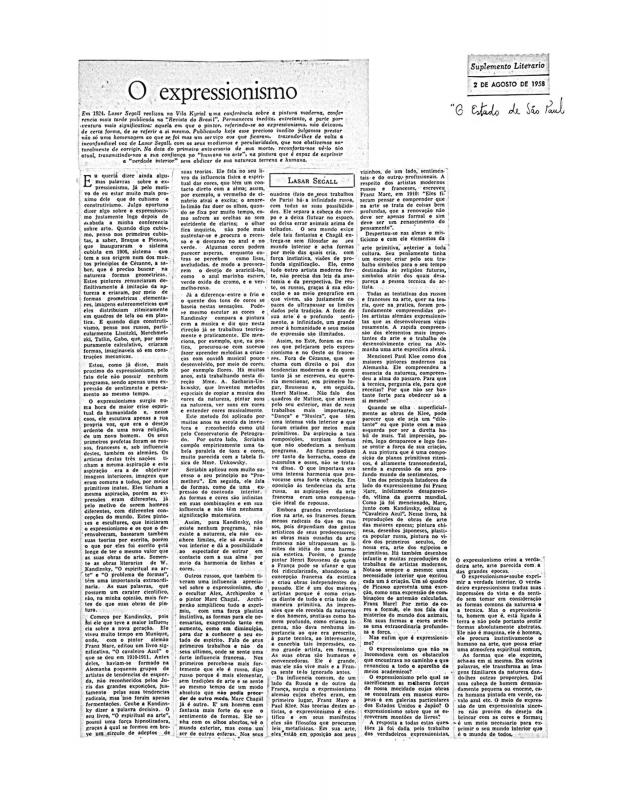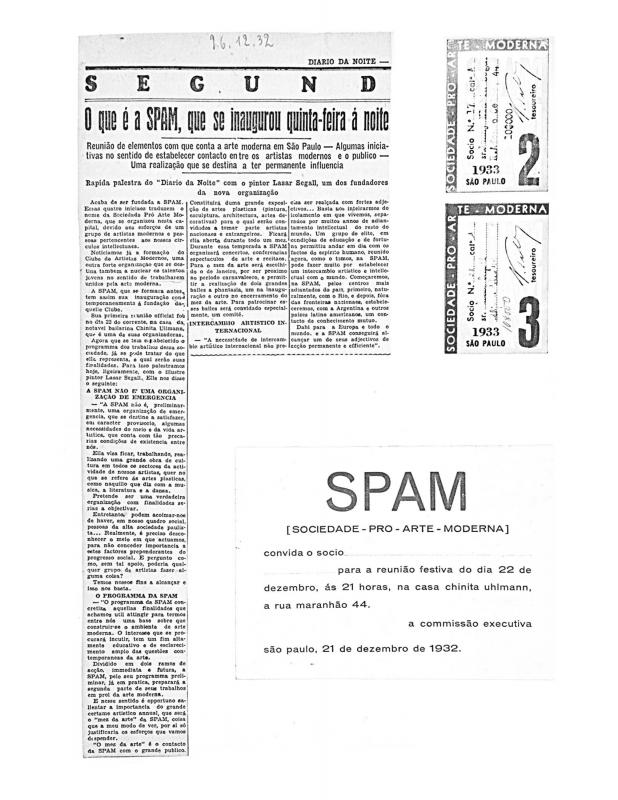The SPAM association’s social center opened in 1933, and consisted of a bar, dance hall, studios, and a library. The members of the association were organized along the lines of an ideal city—which they dubbed Spamolândia—with its own anthem, “Spamtriótico” written by the composer Camargo Guarnieri, a population of Spamitas, and a monetary system of their own design that included the Spamito and the Spamote. SPAM’s first show was considered the greatest exhibition of modern art that Brazil had ever had. The second event included works by artists from Rio de Janeiro such as Candido Portinari, Emiliano Di Cavalcanti, Alberto da Veiga Guignard, and Silvia Mayer, among others. SPAM joined forces with CAM (Clube dos Artistas Modernos) to create a sort of Official Salon for modernist artists in the capital city of São Paulo.
Lasar Segall (1891–1957) was born in Vilnius, Lithuania, where his family was part of the Jewish community. He enrolled in the School of Applied Arts in Berlin and, in the early years of the century, spent time at the Academy of Fine Arts. In 1912 he travelled to Brazil, where his brothers were already living. The Centro de Ciências e Artes de Campinas (São Paulo) bought one of his paintings: Cabeça de menina russa (1908). He returned to Europe during the First World War. Joining forces with a group of German painters (such as Otto Dix) he co-founded the Dresdner Sezession – Gruppe 1919. After an exhibition of Russian art in Hanover in 1921 he established a relationship with Kandinsky. In 1923 he returned to Brazil. He painted a mural at the Pavilhão de Arte Moderna, a meeting place for artists and intellectuals at the home of the great promoter of the Semana de Arte Moderna of 1922, Mrs. Olivia Guedes Penteado. The mural was reviewed by Mário de Andrade, who identified his “Brazilian phase” (1924–28). Segall took part in SPAM’s Primeira Exposição de Arte Moderno and the Spamolândia project in 1934. Three of his paintings and seven prints were featured in the Entartete Kunst Ausstellungsführer [Exhibition of Degenerate Art] organized by the Nazis in Munich in 1937 to discredit modern art. In the 1940s Segall traveled, painted stage sets, and illustrated books and magazines. His major work, Navio de emigrantes (1939–41), was highly praised by George Grosz.
For more information on this painter’s essays about art in Brazil, see the text “Existe uma arte judaica?” [doc. no. 783319]; the lecture “O expressionismo” [doc. no. 783352]; and the interview “O que é a SPAM, que se inaugurou quinta-feira à noite” [doc. no. 783486].
The noted critic, poet, musicologist, and cultural promoter Mário de Andrade (1893–1945) closely followed Segall’s career in Brazil, writing several articles outlining what he described as the painter’s “visual art biography” during the time he lived in Brazil [doc. no. 783393]. He also introduced the album of drawings of the work Mangue produced by Segall [doc. no. 1111411].
There was also a great deal of interest in the 82 pages devoted to him in the “Revista Acadêmica: número de homenagem a Lasar Segall” [doc. no. 1110322] and a critical essay by Abilio Álvaro Miller, “Um pintor de almas” [doc. no. 1084988].







